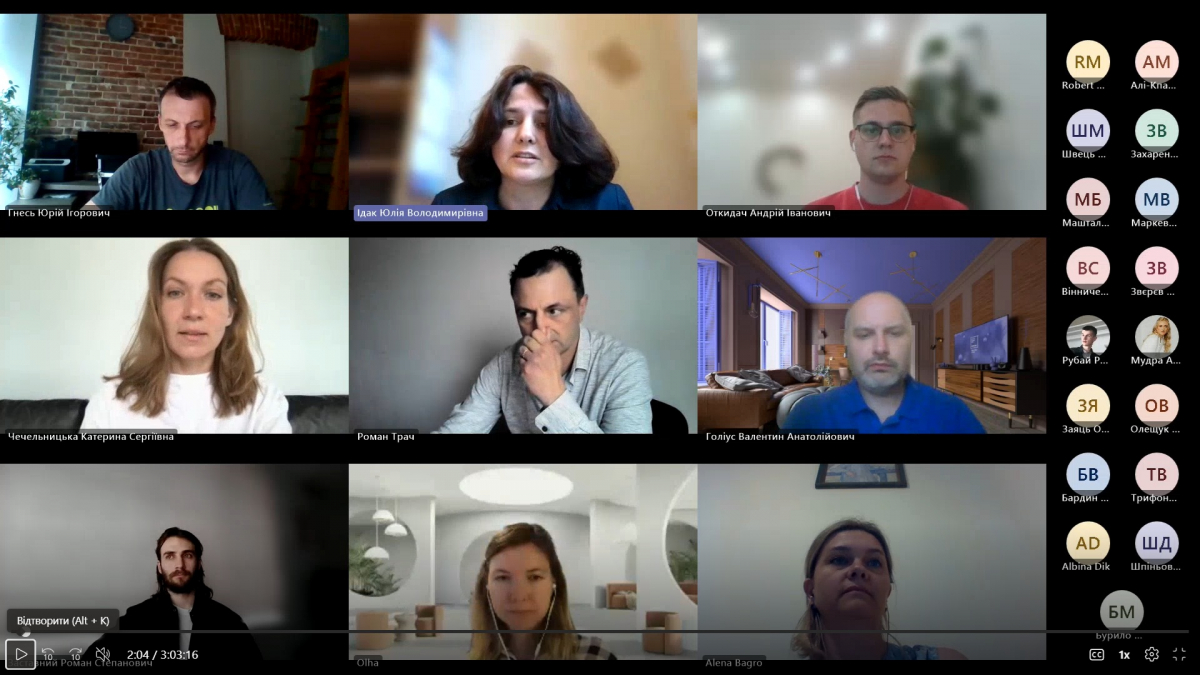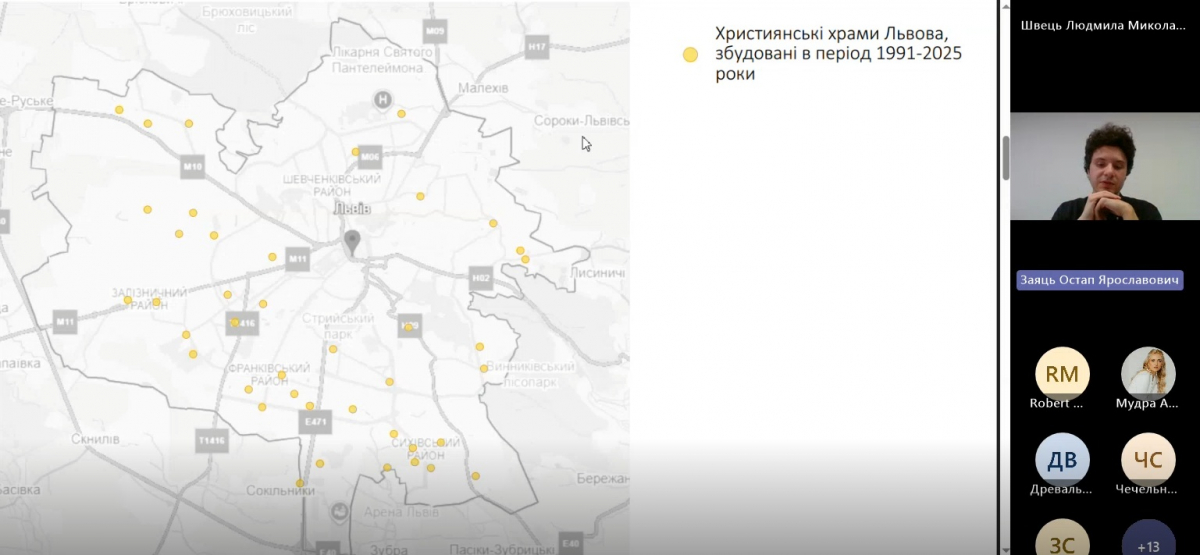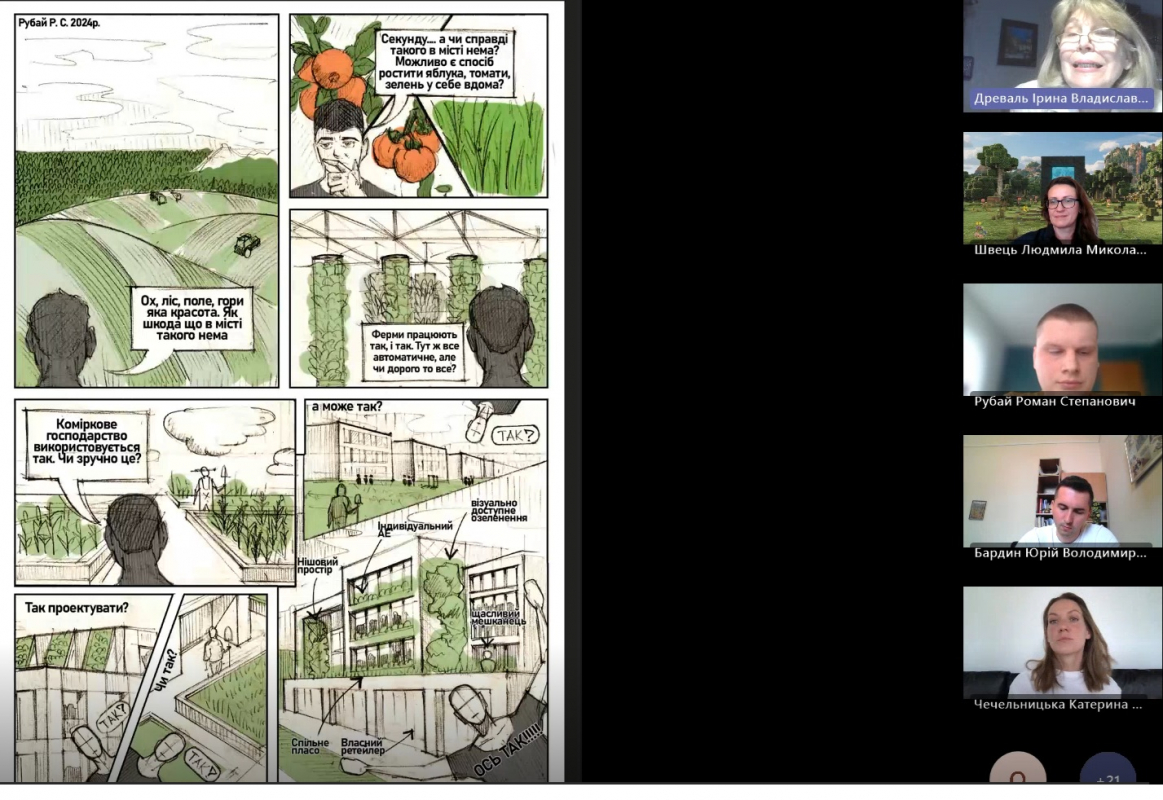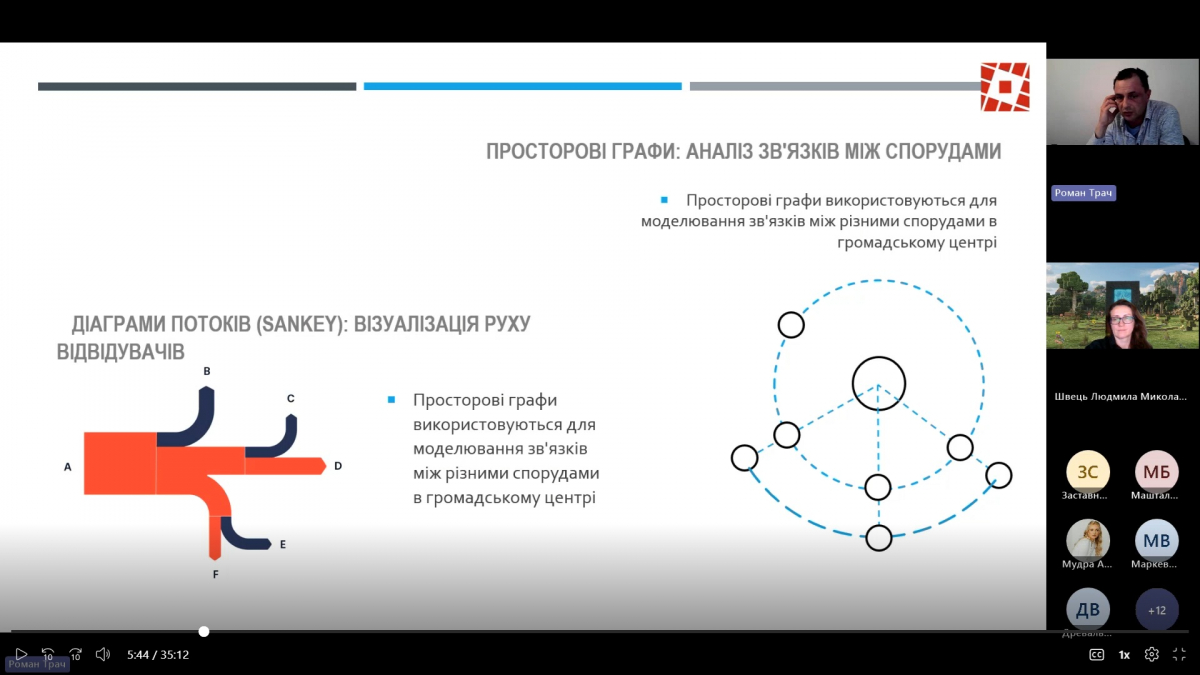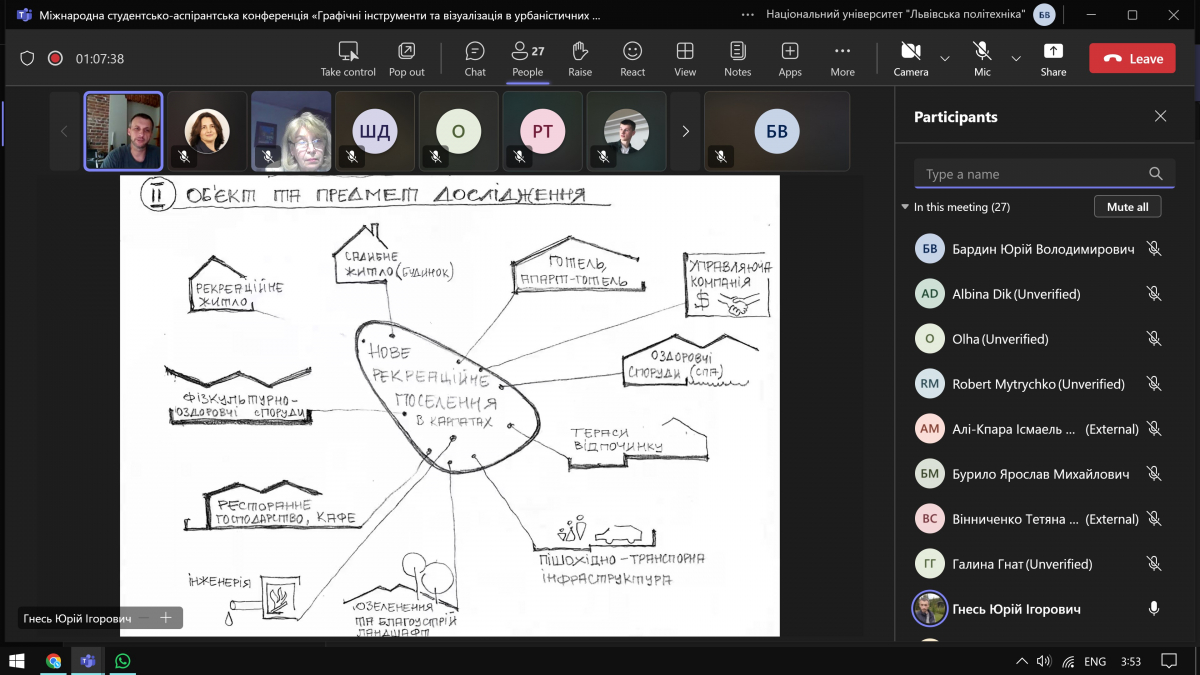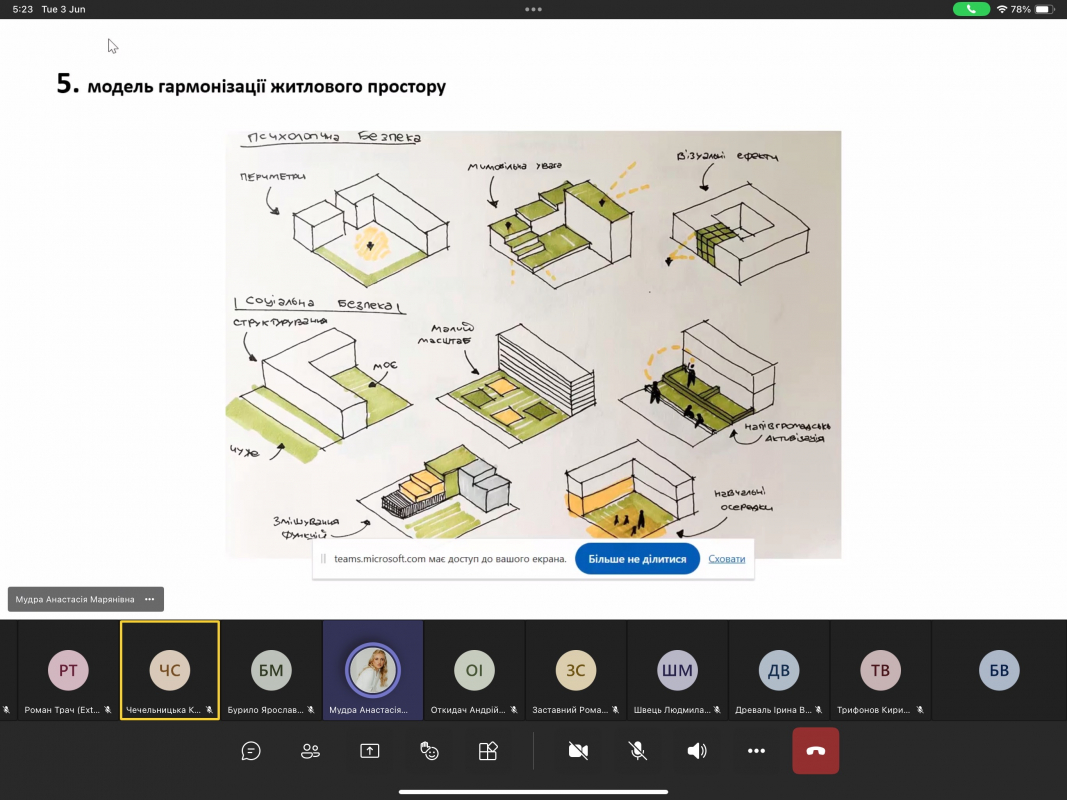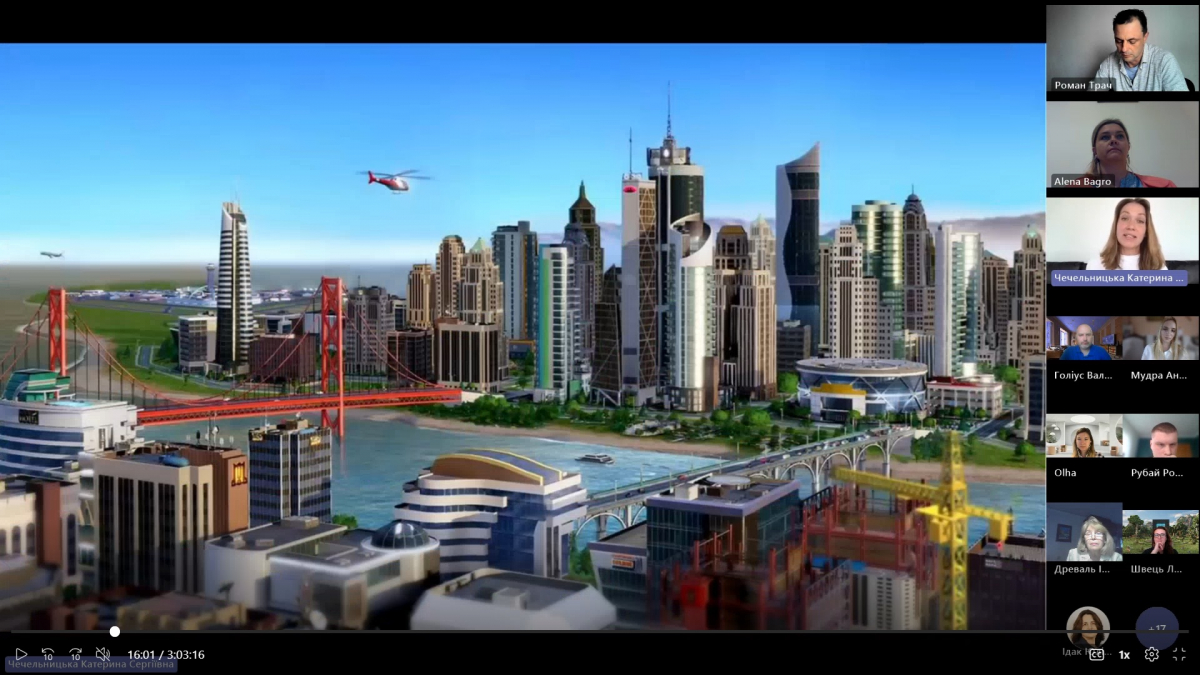On 3 July 2025, the Department of Urban Planning and Design, Lviv Polytechnic National University, together with the Department of Urbanism and Urban Development, O.M. Beketov National University of Urban Economy in Kharkiv, organised an International Student and Postgraduate Scientific and Practical Conference on Graphic Tools and Visualisation in Urban Studies.
The idea of holding such a scientific event was not accidental. The organisers already had some experience in this area, albeit less formalised. The prerequisite for organising the conference was the belief that an architect, urban planner, designer or artist not only can, but must think in images. For them, visual language is not only a means, but above all a way of understanding the space of reality, the environment of life, the space of change and action, that is, everything that forms the context of their professional reality. That is why the key idea was that if ideas, concepts, material objects, or phenomena are not visualized, they are not yet fully present within the professional competence of architects, urban planners, designers, and artists.
Thus, the event aimed to create a platform for the exchange of ideas and methods for displaying the results of urban research using graphic tools, as well as to actualise the role of visualisation in the interdisciplinary environment of scientific and project research.
The scientific committee of the conference was headed by Yulia Idak, Doctor of Architecture, Head of the Department of Urban Planning and Design, the Institute of Architecture and Design, Lviv Polytechnic National University. The scientific committee included researchers and professors from Ukraine, Germany, Spain, Poland, and Romania, while the organising committee was represented by Ukrainian, Danish, and Polish scholars.
Moderating the conference was a real example of effective inter-university cooperation: Professor Iryna Dreval, Associate Professors Kateryna Chechelnytska, Liudmyla Shvets, O.M. Beketov National University of Urban Economy in Kharkiv, and Yurii Bardyn, Lviv Polytechnic National University, created a favourable atmosphere for open dialogue and professional exchange of views.
More than thirty people took part in the event, including young researchers, students, postgraduates and professors. The event was a vivid example of academic mobility, open dialogue, and joint formation of the scientific language of urban studies in the twenty-first century.

